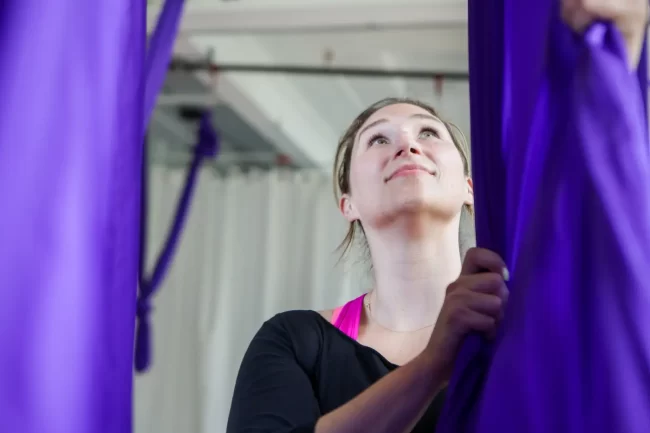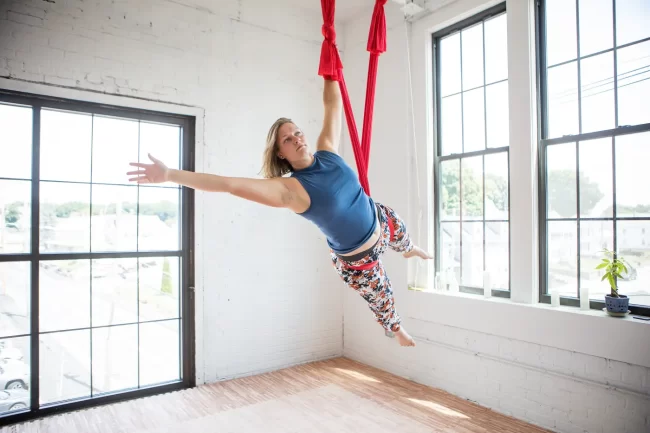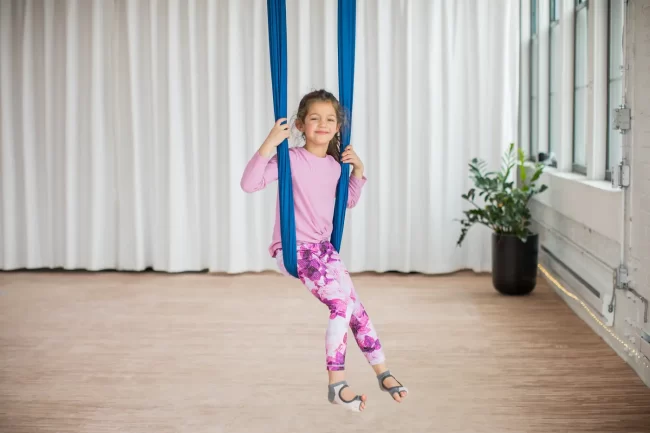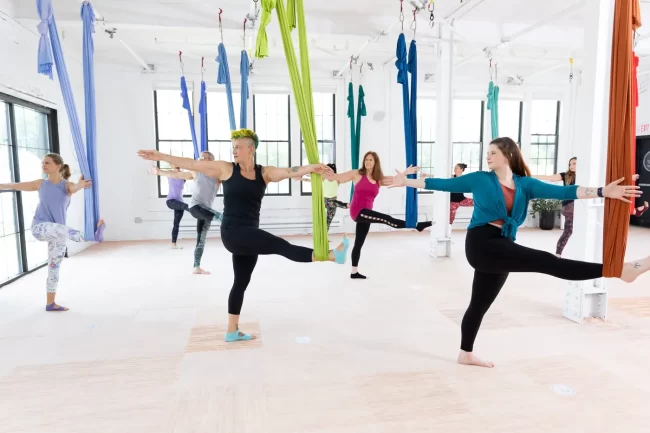Aerial yoga can be fun, exciting, and even a bit addictive.
So, what happens when you want to practice more, and the studio you love is too far from where you live, or the class times don’t work with your schedule? The easy answer might be, “Install a silk at home.” But rigging up and using your own aerial silk at home, without proper instruction and support, can be dangerous and comes with a big warning label.
Here are a few important things you should consider before installing an aerial silk at home:

1. Material Quality
The equipment used for rigging should be of high quality and the installation should be done correctly to ensure that it is secure and safe to use. At Earth & Aerial Yoga, for example, every studio silk is break-tested by the manufacturer, and runners and carabiners are each rated to hold several thousand pounds.
2. Structural Integrity
Your home might not be equipped to support the weight and force of a person hanging from an aerial silk. It’s important to have a professional—a licensed contractor, structural engineer, or aerial rigger—inspect the area where you plan to rig the silk to ensure that it can support the weight of both the individual(s) and the rigging equipment. In our case, our rigging system was approved by a structural engineer, and installed by a professional stage rigger, who also does regular maintenance checks.

3. Room to Move
The space you are practicing aerial yoga in must be clear of any obstacles and provide ample room for movement. Avoid installing your aerial silk near sharp objects or hard surfaces.
4. Risk of Injury
Aerial yoga is a dynamic and rewarding practice that requires proper training, skill, and experience to execute safely. If you are new to aerial yoga or lack sufficient experience, you may be at risk of injury. That’s why it is crucial to never practice aerial yoga alone. Whether you are practicing at home or in a studio, always make sure that there is someone else present to assist you in case of an accident or injury, and keep a phone nearby to call for help, if needed.

5. Child Supervision
Aerial yoga can be more challenging than traditional yoga, and children may not have the strength or coordination to perform the movements safely on their own. They may also be more likely to take risks or try to perform advanced poses before they are ready. That’s why it is critical for an adult to always be present and actively supervise children, while they practice aerial yoga.
6. Legal Issues
Rigging aerial silks in a residential area may be against local zoning laws or building codes. You may also be liable for any damage or injury that occurs as a result of improperly installed rigging equipment.

Now that you know what we know, you can see why we strongly recommended that you limit your practice to a specialized facility, like Earth & Aerial Yoga, where the equipment is installed and tested by professionals, and students receive expert instruction and support.
If you do choose to rig an aerial silk at home, we are all for it, as long as you consider all of the safety guidelines and take appropriate safety measures. This includes hiring a professional to install and inspect your aerial yoga rig, and ensuring that the equipment is secure and free from defects. By following these safety guidelines and seeking professional assistance, you can enjoy the many benefits of aerial yoga at home, while minimizing your risk of injury.
